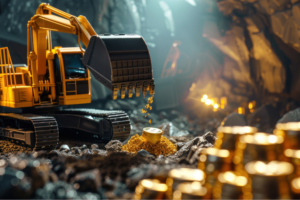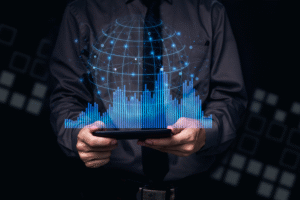An Investors’ Guide to Critical Minerals: What are they, why are they critical & how to invest in them?

Critical Minerals is the buzzword of the decade in the commodities sector. They’re not just any minerals, they are minerals important enough for governments to invest into projects themselves, or otherwise incentivise the development of projects. But amidst all the hype, we thought we’d take a step back and look into what these minerals are, why they’re critical and how to invest in them.
What are critical minerals? And why are they critical?
Critical minerals are natural resources that are essential for modern technologies, economies, and national security but are vulnerable to supply disruptions. The latter point is the crucial reason why Western governments are investing so much in them, both directly and indirectly – but more on that later.
These minerals are considered important for 4 reasons. First, their use in essential modern technologies. These include batteries, electronics, renewable energy systems (like wind turbines and solar panels), electric vehicles and aerospace technologies just to name a few.
The second is supply chain vulnerabilities resulting from the fact that critical minerals are often concentrated in a few countries. This makes the supply chain vulnerable to geopolitical tensions, trade restrictions, or other disruptions. For example, China is a major supplier of rare earth elements, which are critical for many industries globally.
Third, the fact that there are limited substitutes for many of them. By substitute we mean an equivalent metal that can perform the same function with similar efficiency or at a comparable cost. You may be able to substitute different metals in, but expect worse efficiency and/or higher costs.
Fourth, the availability these critical minerals is essential for the economic health of a nation and its national security. For instance, certain critical minerals are vital for military equipment, communications systems, and other defence technologies. A disruption in the supply could have significant implications for national security.
Countries and industries are increasingly focused on securing reliable sources of critical minerals. This has been particularly true in the 2020s as China cut itself off from the world during the pandemic. Governments are undertaking various initiatives to support them such as by investing in certain projects, or providing certain incentives, particularly tax-related. Australia has its own Critical Minerals Strategy that underpins several initiatives, most particularly project financing and grants.
Which specific metals are critical?
It depends from country to country, but most generally you’ll find REEs, uranium and battery metals on the list. Australia has several dozens of critical minerals, and the full list can be found here. But some include high-purity alumina, cobalt, graphite, lithium, magnesium, manganese, nickel, REEs, titanium, tungsten and vanadium.
Australia’s criteria are minerals that:
- Are important for the global transition to net zero and broader strategic applications, specifically the priority technologies set out in the Critical Minerals Strategy,
- Australia has geological potential for resources, and
- Are in demand from strategic international partners.
You’ll most commonly hear about 3 of them: lithium, uranium and REEs. Note: We aren’t talking about gold or copper as they are considered precious and base metals respectively, even if those metals are critical for certain applications.
Lithium is a soft, silvery-white alkali metal that is the key ingredient in lithium-ion batteries, used in electric vehicles, electronics and grid storage. It has many other uses too including in nuclear fusion and in PWR cooling systems. There are more ASX stocks in this battery metal than others.
But for the last 3 years or so, companies have not gone well because prices fell due to an oversupply. This has led to companies falling into administration, suspending production at operating mines, or at the very least suffering a plunge in revenue and earnings. There’s a lot of debate as to when or if lithium will enter a new bull market but we won’t delve into it in this article.
Uranium is a naturally occurring radioactive element. It is most commonly used in nuclear, as fuel for power plants and for reactors that run naval ships and submarines, thus making it one of the most controversial metals out there.
But investors have been waking up to the benefits once again. Uranium is one of the few commodities with a decarbonisation angle. And just as was the case in the mid 2000s bull market, countries are once again keen for either their own energy sources or those from geopolitically stable countries. So many ASX companies are re-starting mothballed mines like Boss Energy (ASX:BOE), Peninsula Energy (ASX:PEN) and Paladin Energy (ASX:PDN). It is a good time to look at uranium.
REEs (Rare Earth Elements) is a term put towards a collective group of 17 elements found on the periodic table that have unique magnetic, luminescent, and catalytic properties. These elements include lanthanum, cerium, praseodymium, neodymium, promethium, samarium, europium, gadolinium, terbium, dysprosium, holmium, erbium, thulium ytterbium lutetium and scandium.
These elements aren’t called rare because they are rare (i.e. not abundant) but not in large concentrations. The modern applications of these rare earths span across many industries, such as renewable energy sources like hybrid car batteries and wind turbines. They are also used extensively in medical imaging technology, such as X-ray machines and MRI scanners.
The biggest company on the ASX is producer Lynas (ASX: LYC). Then there’s over a dozen explorers and developers such as Northern Minerals (ASX: NTU) and St George Mining (ASX:SGQ).
How to invest in critical minerals?
So far as Investment Options are concerned, there are plenty of them. For stock investors, investing directly into resources companies is one way. You can invest in major miners, aspiring developers as well as up and coming explorers. ETFs focused on critical minerals are another option provide diversification across multiple companies and minerals. For more sophisticated investors, investing in these metals directly on metals exchanges is a possibility too.
Before making any investment it is important to understand what you’re investing in. You need to know about the company you’re investing in as well as the metal it is mining/prospecting for. Study the industries driving demand, whether it be electric vehicles (EVs), renewable energy, electronics or anything else. You should also understand the geopolitical and supply chain risks associated with each mineral.
And then when the investment is made, monitor it by keeping up with developments in technology, government policies, and global trade that could affect the demand and supply of critical minerals generally. Also monitor what your company is up to – pinpoint upcoming catalysts and when to expect them. Track the prices of key minerals to understand market trends and potential investment opportunities.
We recommend investors diversify their investments across different minerals, companies, and regions to mitigate risks.
Conclusion
Investing in critical minerals can be lucrative, especially with the growing demand for green technologies, but it requires careful research, a long-term perspective and tolerance for short-term fluctuations.
What are the Best ASX Stocks to invest in right now?
Check our buy/sell tips
Blog Categories
Get Our Top 5 ASX Stocks for FY26
Recent Posts
Develop Global Wins $200m OceanaGold Contract- What It Means for Investors
Develop Global (ASX: DVP) climbed 4% to A$4.36 on Friday after securing a A$200 million underground development contract with global…
Nova Minerals Drops 14% on $20m Capital Raise- Buy or Avoid?
Nova Minerals (ASX: NVA) dropped nearly 14 per cent to A$0.90 following the announcement of a US$20 million (approximately AUD…
WiseTech (ASX:WTC) Rises After Richard White Cleared of Misconduct – Should You Buy the Dip?
WiseTech Global (ASX: WTC) climbed 3 per cent to A$70.18 on Friday after founder and Executive Chairman Richard White was…



